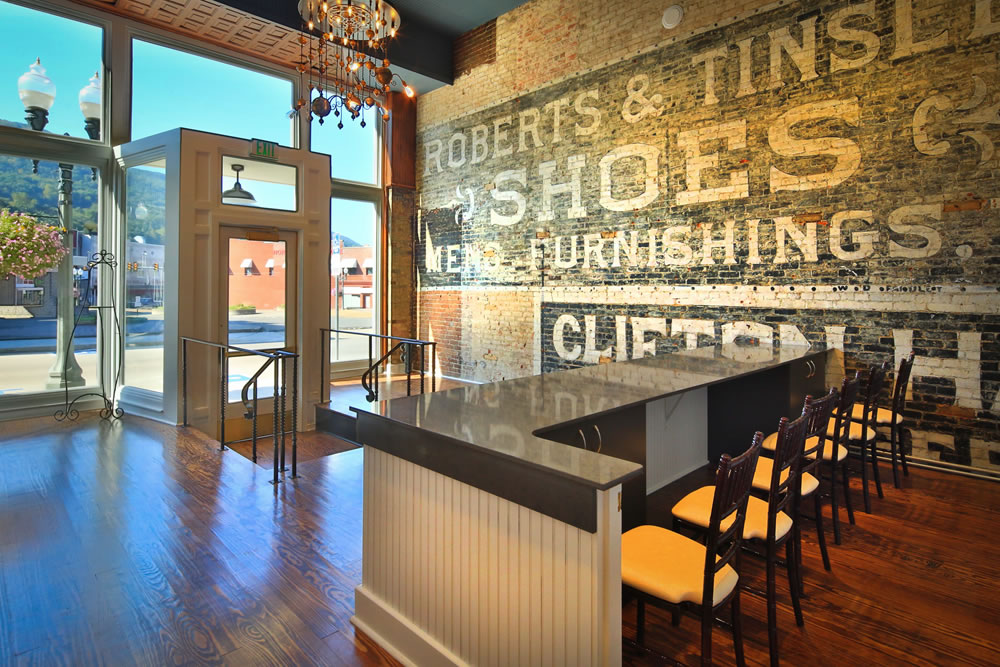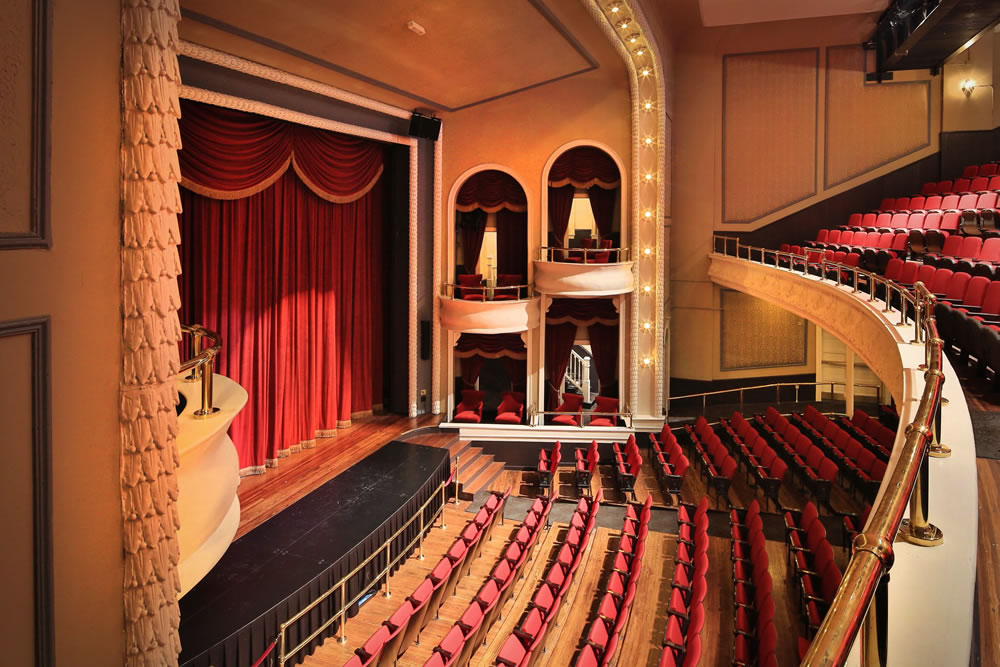Theatre History
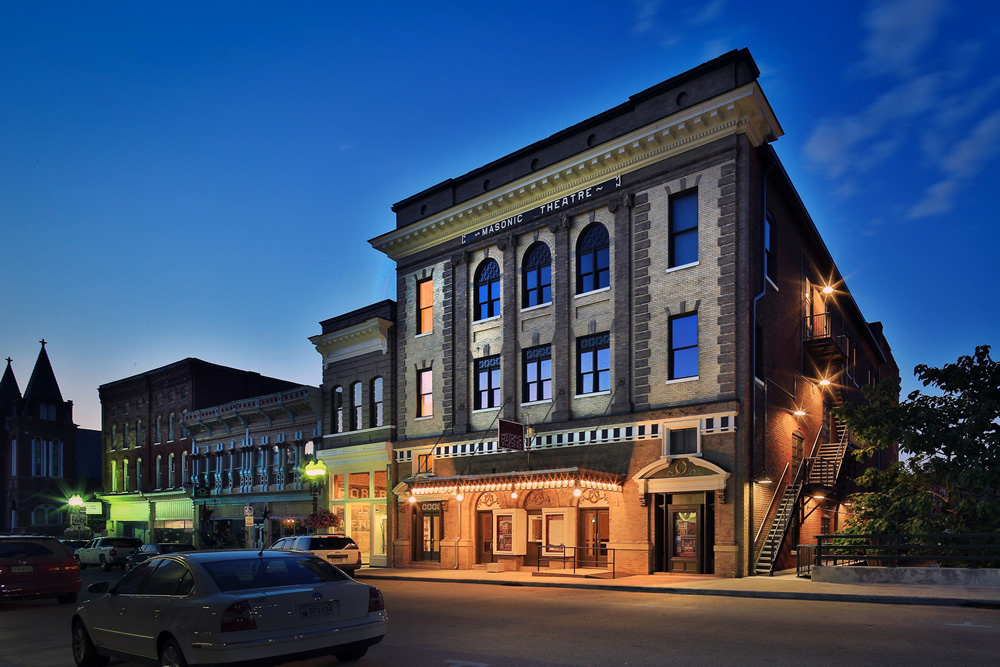
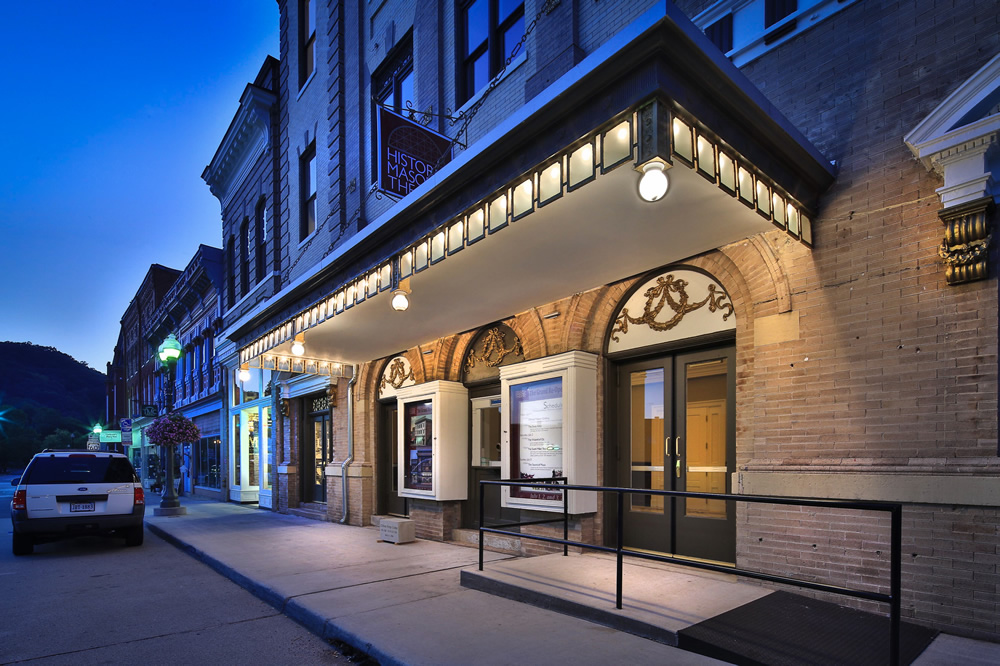
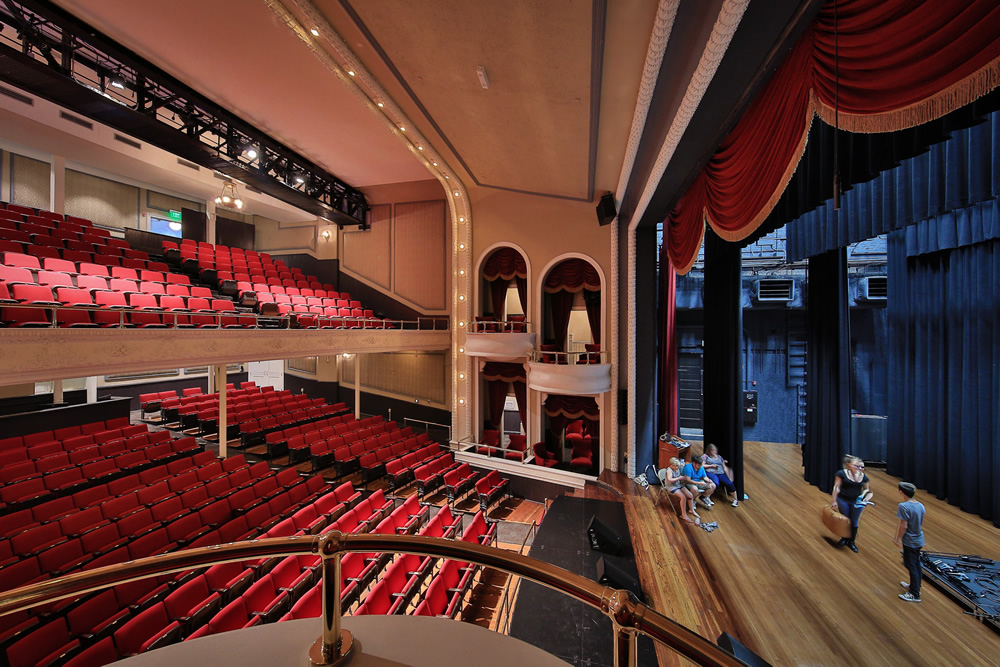

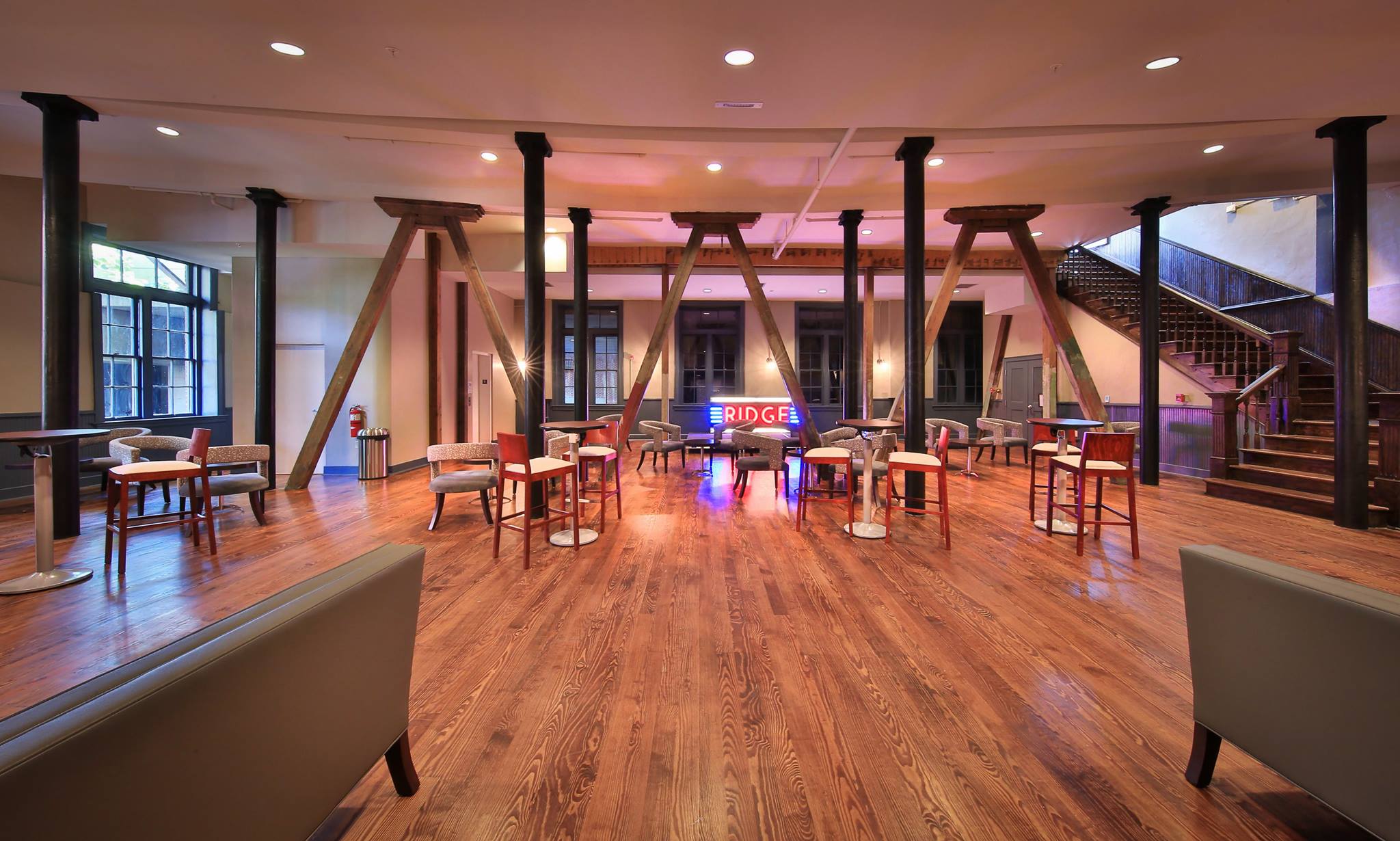
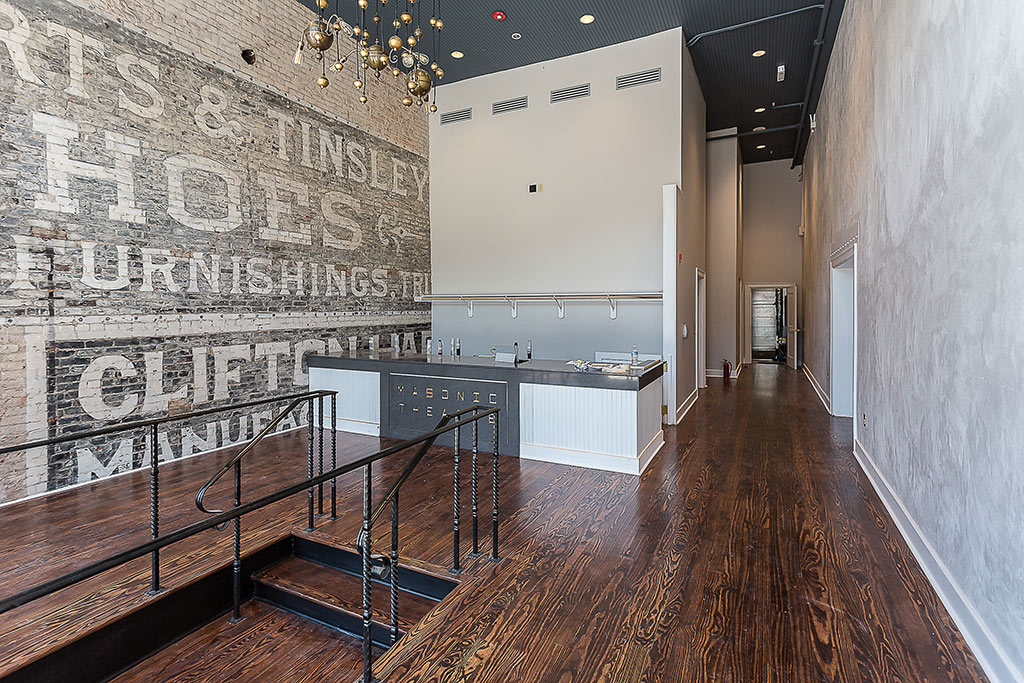
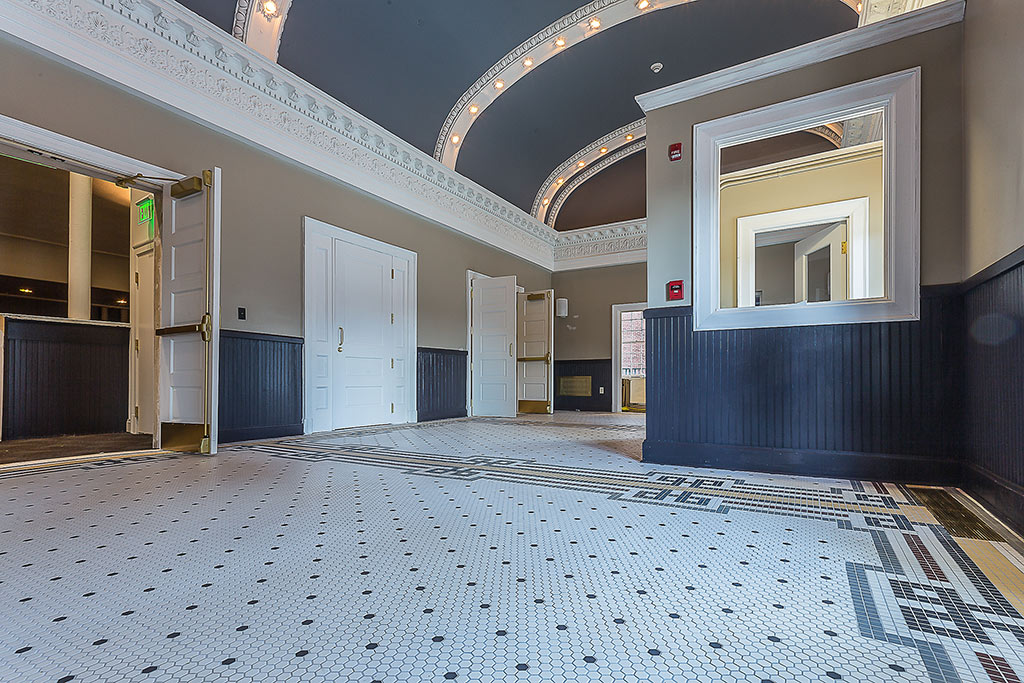

The Historic Masonic Theatre is an architectural treasure. Designed by the Lynchburg firm of Frye and Chesterman, and commissioned by Low Moor Masonic Lodge 166, the Theatre opened in September 1906. A three-story Beaux-Arts brick building, with an additional underground level, a pilastered facade, cove ceiling lobby and original performance hall with stage, enriched proscenium and balcony, the historic theatre has been transformed into a performing art, entertainment, education, and community facility.
Once known as The Mason Hall and Opera House, the building was constructed in 1905 and throughout its history hosted political speakers, William Jennings Bryan in 1908, western movie icons like Lash LaRue, Tex Ritter who performed on stage with his horse, White Flash, and Cowboy Bob Steele. Masonic Lodge 166 conducted its meetings in the third-floor ballroom. In addition to meetings and shows, the Theatre hosted silent movies; and later, talkies, vaudeville, newsreels, classic movies and film, and stage stars.
Other stars made the Masonic Theatre a part of their performance legacy. Performers included Gene Autry, Hopalong Cassidy, as well as legends Burl Ives, the Drifters, and the world-famous Count Basie Orchestra.
Through its long history, the Theatre has had a succession of owners; Sam Sachs in 1908, Shenandoah Valley Theatre Company from 1926 to 1966, Warner Brothers, Irwin Cohen, who bought the Theatre in 1968 and who renamed the Theatre the Stonewall Theatre and hired Mrs. Roy Anderson as manager, Appalfolks of America in 1991. The Town of Clifton Forge took ownership in 2003, with Appalfolks continuing to offer performances to the community.
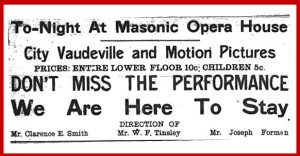
The Masonic Theatre Preservation Foundation was formed in 2009 and its main goal was to preserve and protect this valuable community asset. Years of fund-raising ensued and in April 2015, reconstruction began on the Historic Masonic Theatre with all funding in place and historically accurate architectural drawings focused on restoring the original elements and beauty of the 1905 Theatre.
The 6.7-million-dollar renovation has rehabilitated all four floors of the Theatre, the third-floor ballroom warming kitchen and studios, the balcony level with offices and conference room, the auditorium with stage and lobby, and the lower level dressing rooms, concessions and underground lounge that looks out onto Smith Creek
The renovation has been completed, now the real task begins—the operation of a community asset that offers so much to all residents of the Alleghany Highlands. The Theatre stands as a testament to the vision of earlier citizens of the area who sought to foster educational and entertainment opportunities as well as community fellowship. The Historic Masonic Theatre holds a special place in the hearts and minds of a supportive community and it looks to the community to keep it strong and vital for years to come.
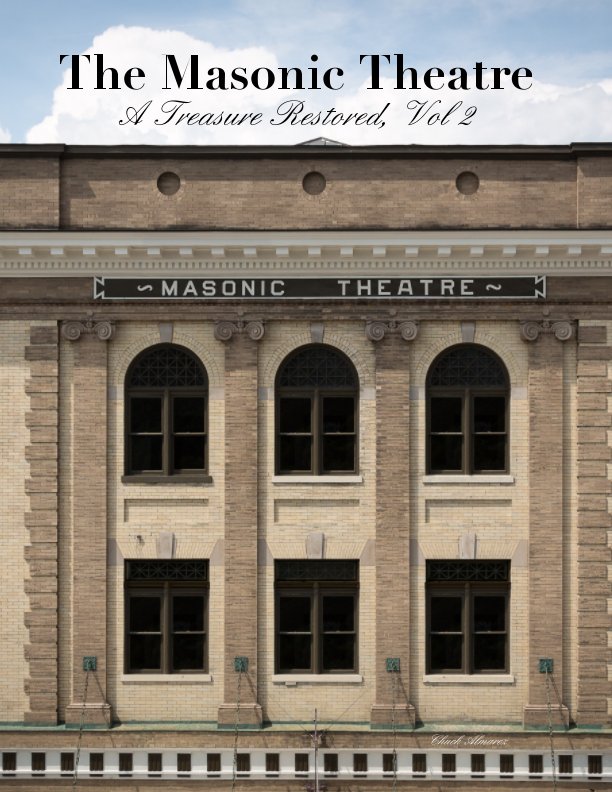
Local photographer and multi-media specialist, Chuck Almarez, photo-documented the entire renovation process and published a beautiful book of his favorite images.
This breathtaking publication covers the initial demolition that started in May 2015 and continues to the Grand Opening on July 1, 2016. The photographs included in the book provide a behind-the-scenes look at the amazing work completed during each phase of the renovation process. Also included is a group photo of the Masons from District 23 who presented a rare second cornerstone laying ceremony in the Theatre, a photo of the new cornerstone, and a photo of the dinner celebration held in the WestRock community room at the conclusion of the ceremony.
His book is available for purchase, here.
Chuck also created this video of his renovation photographs. We regularly play this video during our monthly, free, Theatre Tours. Visit our events calendar to learn more about our tours. If you are unable to attend a tour, we invite you to take our Virtual Tour located in the sidebar of this page.
What’s Your Story, Volume 1, Remembering the Historic Masonic Theatre, published in 2016, is a collection of experiences, reminiscences, and recollections of 27 local citizens, ages 11 to 98 who grew up in the area and attended shows, movies, and events at the Historic Masonic Theatre.
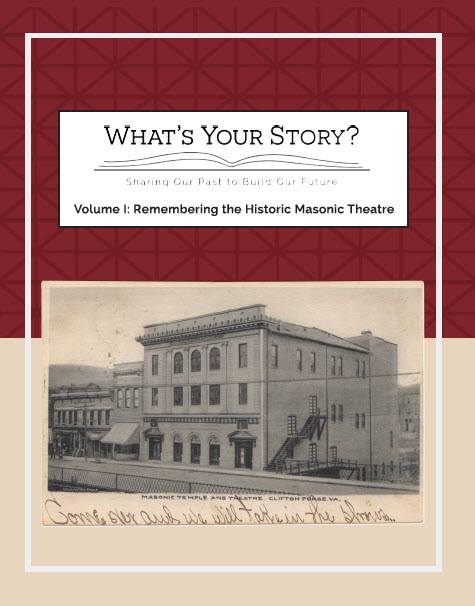
“The first storytelling project worked just as we hoped it would,” says Joan Vannorsdall, project coordinator. “The stories we heard ranged from first dates resulting in marriage to possums in the concession stand; from segregated balcony seating to the wonders of Shirley Temple and King Kong. We heard again and again that people wanted—needed—a gathering place for entertainment and community. Everyone we interviewed and video recorded has big hopes for great things in the Highlands from the re-opening of the Masonic Theatre. We know that because they told us their memories of the past, and looked into the future with us.”
The interviewees ranged in age from eleven to ninety-eight years old and came from throughout the Highlands and beyond. The storytellers were videotaped and professionally photographed. The result is the seventy-page, full-color Remembering the Historic Masonic Theatre, available at local businesses and on the Historic Masonic Theatre website.
“When people feel listened to, when they believe their ideas and stories matter not just to them personally, but to the whole community, they become part of something larger. Listening is powerful; it’s validating. By listening to what people remember about their pasts, we can see forward more clearly,” says Vannorsdall.
The book may be purchased at the Theatre, and at other merchants throughout the Alleghany Highlands.
Watch the video, below, created using selected interviews recorded as research for the book.
SUPPORT US
To ensure a successful future, we are asking you to make a financial gift to The Masonic Theatre Preservation Foundation today. Any gift you can give will go right to work providing opportunities for artists and patrons.
